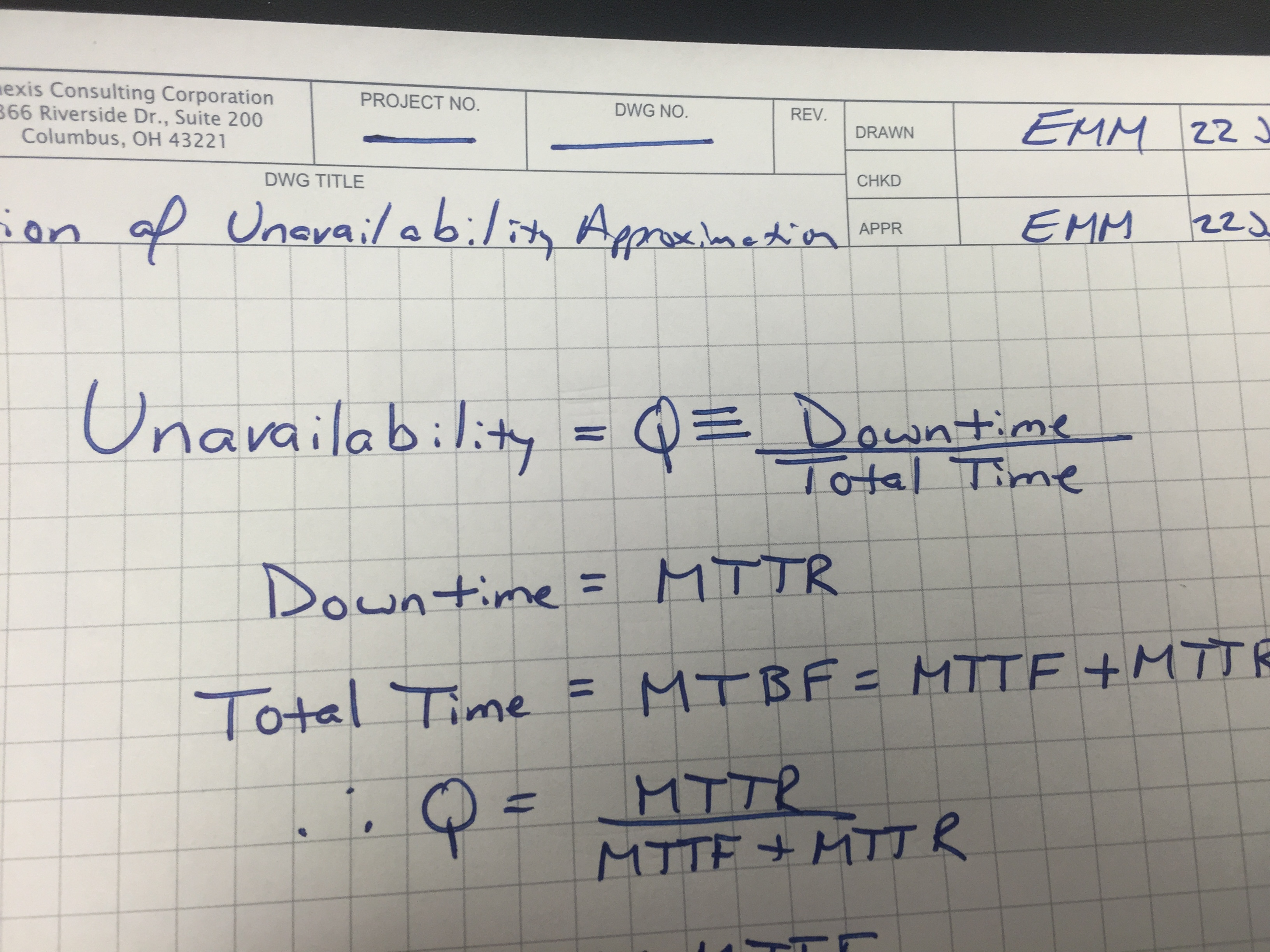The process of safety integrity level (SIL) verification requires calculation of probability of failure on demand. As per convention and the information contained in the IEC 61511 standard (ISA 84.00.01), ISA technical reports on the topic and ISA training, the calculation is typically done using simplified equations. The terms of these equations are either based on unavailability or unreliability, depending on whether or not the failure can be detected and repaired during the component’s mission. The simplified equation for unreliability is: (lam * T) / 2 – where “lam” is the failure rate and “T” is the mission time. The simplified equation for unavailability is (lam * MTTR) – where “lam” is the failure rate and “MTTR” is the mean time to repair.
The purpose of this article is to explain the origin of the simplified equation representation of unavailability. A hand-written derivation of the equation is shown at the end of this article.
The exercise begins with a definition of unavailability, which is the mean system downtime divided by the mean system total time. Next, the downtime and total time are replaced with the terms commonly used to represent those concepts, specifically, downtime is the mean amount of time that elapses between a failure of a component and return of that component to service, or the Mean Time to Repair (MTTR). The total time between cycles is the Mean Time Between Failures (MTBF) which is the sum of the MTTR and the Mean Time To Failure (MTTF).
The approximation that is used to simplify the equation is contingent upon the MTTR being much-much smaller than the MTTF. If this is the case, then the MTBF can be approximated by the MTTF.
Another assumption in the derivation is that the failure rate of the SIS components is constant, which is a consistent assumption across much of the derivation of the PFD equations. If the failure rate is constant, then the failure rate is 1/MTTF. Replacing all of these approximations and assumptions into the original equation yields the simplified approximation that:
Q ~ lam (MTTR)


